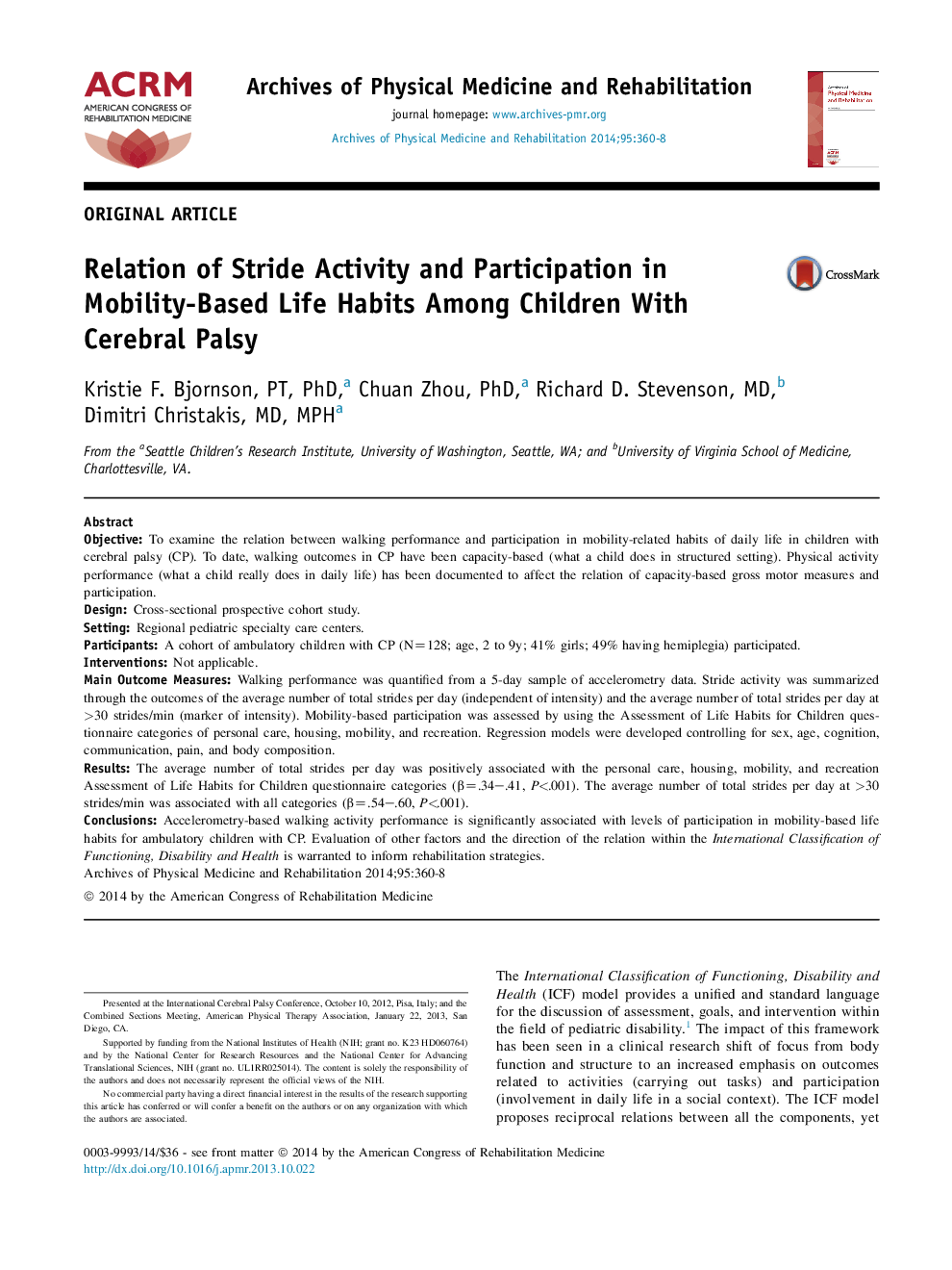| Article ID | Journal | Published Year | Pages | File Type |
|---|---|---|---|---|
| 3449050 | Archives of Physical Medicine and Rehabilitation | 2014 | 9 Pages |
ObjectiveTo examine the relation between walking performance and participation in mobility-related habits of daily life in children with cerebral palsy (CP). To date, walking outcomes in CP have been capacity-based (what a child does in structured setting). Physical activity performance (what a child really does in daily life) has been documented to affect the relation of capacity-based gross motor measures and participation.DesignCross-sectional prospective cohort study.SettingRegional pediatric specialty care centers.ParticipantsA cohort of ambulatory children with CP (N=128; age, 2 to 9y; 41% girls; 49% having hemiplegia) participated.InterventionsNot applicable.Main Outcome MeasuresWalking performance was quantified from a 5-day sample of accelerometry data. Stride activity was summarized through the outcomes of the average number of total strides per day (independent of intensity) and the average number of total strides per day at >30 strides/min (marker of intensity). Mobility-based participation was assessed by using the Assessment of Life Habits for Children questionnaire categories of personal care, housing, mobility, and recreation. Regression models were developed controlling for sex, age, cognition, communication, pain, and body composition.ResultsThe average number of total strides per day was positively associated with the personal care, housing, mobility, and recreation Assessment of Life Habits for Children questionnaire categories (β=.34–.41, P<.001). The average number of total strides per day at >30 strides/min was associated with all categories (β=.54–.60, P<.001).ConclusionsAccelerometry-based walking activity performance is significantly associated with levels of participation in mobility-based life habits for ambulatory children with CP. Evaluation of other factors and the direction of the relation within the International Classification of Functioning, Disability and Health is warranted to inform rehabilitation strategies.
